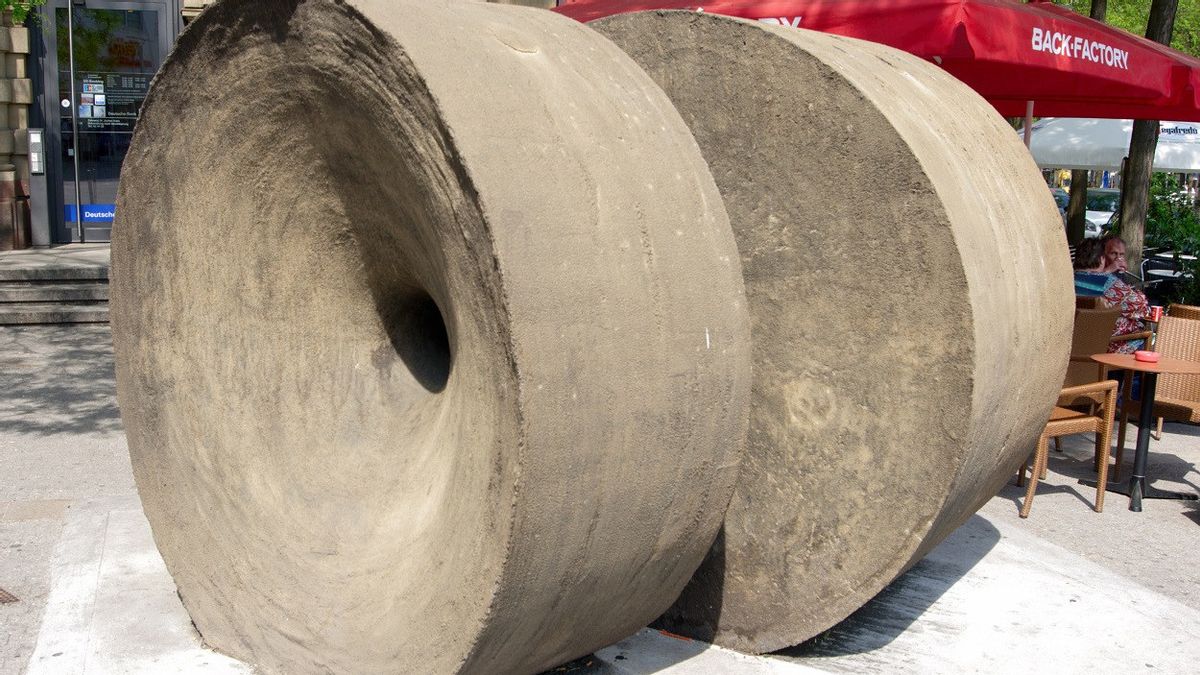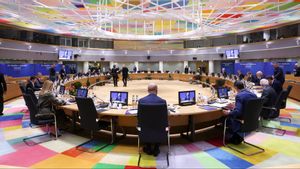JAKARTA - A study found coffee grounds could be used as a mixture of concrete forming stronger quality, as the world produces about 60 million tonnes of wet coffee grounds every year from 2 billion cups of coffee per day globally.
Only a small part was reused, mostly as soil fertilizer and some of the others were burned or ended up in the TPA. There, such as other organic compounds, coffee grounds decay and release methane, greenhouse gases that are 25 times stronger than carbon dioxide in coupled heat.
Most recently, researchers said coffee powder could be used as a concrete fabrication material, could even make it stronger, according to a recent study.
"We were thinking about this idea while drinking coffee," said Rajeev Roychand, a researcher at the School of Engineering at RMIT University in Melbourne, Australia, who led the study.
"We roasted used powder coffee without oxygen and obtained something called biochar. When we added it to the concrete as a substitute for sand, this increased material strength by 30 percent," he said.
The concrete is made of four basic ingredients: water, gravel, sand and cement. This is the most widely used building material in the world. Currently, about 30 billion tons of concrete is used per year, three times compared to 40 years ago.
Roychand and his team replaced some of the sand with biochar, a material similar to charcoal, which comes from coffee waste. They get the best results when replacing 15 percent of the sand and roasting the grounds at 350 degrees Celsius (662 degrees Fahrenheit). The concrete produced is 30 percent stronger than the usual concrete in terms of the material's ability to withstand loads.
"In ordinary concrete, water, which is the second largest material by volume, is absorbed by cement over time, thereby reducing the amount of moisture that is still in the concrete," said Roychand.
This drying effect causes shrinkage and rifts on a micro scale, weakening the concrete.
Biochar from coffee grounds is able to reduce this natural process. When biochar is mixed with concrete, explained Roychand, the particles act like small water reservoirs, which are distributed throughout the concrete.
As concrete drys and starts to harden, biochar slowly releases water, essentially rehydrating the surrounding material and reducing the impact of shrinkage and rifts.
"We will divert this waste and turn it into valuable resources," said Roychand.
"Pasir is also experiencing scarcity, and even if we replace some of the sand, we are still increasing its sustainability aspect, and slowly we may arrive at a stage where most of the sand can be replaced with different waste materials," he said.
Separately, Kypros Pilakoputan, a professor of construction innovation at the University of Sheffield in the UK, who was not involved in the study, said this was interesting from a technology point of view.
However, he felt it was unlikely that the concrete produced this way would be widely used in large-scale applications.
"The main problem with waste is collection and processing," he explained.
"Although collecting all coffee grounds from all over the country is a good thing, the costs that must be incurred will be very large and expensive," he said.
He added that pyrolysis, the process of making biochar, is free of charge, and he believes high carbon concentration in concrete will not increase the concrete durability in the long term.
Roychad pointed out that waste collection has become commonplace, and a number of companies in Australia are focused on recycling coffee waste.
He added that pyrolysis costs are mainly related to initial investment in equipment, while biochars are produced at temperatures much lower than cement, 350 Celsius compared to around 1,450 Celsius.
SEE ALSO:
It is known that the concrete material that contributes the most to climate change is cement, which is responsible for 8 percent of global CO2 emissions by 2021 according to the think tank Chatham House.
Roychand believes that a 30 percent increase in concrete power will allow global CO2 emissions to decrease by up to 10 percent, thereby reducing climate impacts.
He said the discovery had attracted both interest from construction companies and organizations that recycle coffee grounds, and his team is now working with local councils in Australia to start field demonstrations.
The English, Chinese, Japanese, Arabic, and French versions are automatically generated by the AI. So there may still be inaccuracies in translating, please always see Indonesian as our main language. (system supported by DigitalSiber.id)


















